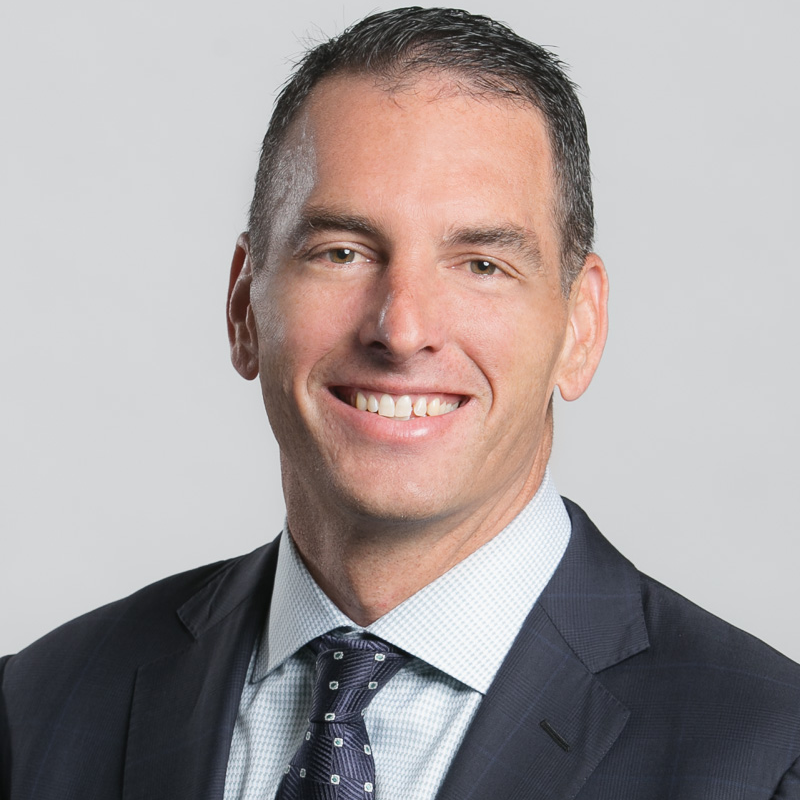Michael Faulkender Directory Page

Michael Faulkender
William E. Longbrake Chair
Former United States Deputy Secretary of the Treasury
Ph.D., Northwestern University
Michael Faulkender is the William E. Longbrake Chair of Finance at the Smith School. He joined the University of Maryland in 2008 and was the Associate Dean of Master’s Programs in 2017 and 2018. On March 26, 2025, he was confirmed by the U.S. Senate as the 16th Deputy Secretary of the Treasury. Further, on April 21, 2025, he was appointed acting commissioner of the Internal Revenue Service.
Previously, in 2019, Faulkender served as the Assistant Secretary for Economic Policy at the US Department of Treasury. In that role, he advised the Secretary on domestic and international issues that impacted the economy. During the COVID-19 pandemic, he assisted in negotiating the CARES Act and was the senior Treasury official who led the implementation of the Paycheck Protection Program (PPP). In January, he was awarded the Alexander Hamilton Award for Distinguished Leadership, the highest service award granted at the Department of the Treasury.
His research lies at the intersection of financial economics and public policy. Examples include the job impacts of the PPP, corporate capital structure, risk management, corporate liquidity, and executive compensation. His work has been published in top academic finance journals, received numerous “best paper” awards, and has been cited in the Wall Street Journal, Washington Post, and The New York Times, among others.
Professor Faulkender teaches classes in the MBA and EMBA programs at the Smith School. Professor Faulkender has a PhD in Finance from Northwestern and a Bachelor's Degree in Managerial Economics from UC Davis. He has also served as a faculty member at the Wharton School at the University of Pennsylvania, the Kellogg School at Northwestern University, and the Olin School at Washington University in St. Louis.
News
Insights



2021
Faulkender M, Jackman R, Miran S. The Job-Preservation Effects of Paycheck Protection Program Loans. 2021.
Abstract
The Paycheck Protection Program (PPP) covered in excess of 80% of eligible U.S. small business employment, supporting 51 million American jobs through the program's close on August 8th,2020. Of those supported jobs, how many would have been lost in the absence of PPP loans?To answer this question, we propose an empirical strategy to identify the effects of PPP loans on county-level unemployment insurance claims. Specifically, we exploit variation in the timing of loan receipt caused by differences in local banking market structure across US counties. On the margin, we estimate that a 10 percentage point increase in eligible payroll covered by PPP resulted in a 1 to 2 percentage point smaller jump in weekly initial unemployment insurance(UI) claims, as a share of employment covered by UI. With a lag, that same 10 percentage point increase in PPP coverage resulted in an estimated 5 percentage point smaller increase in the insured unemployment rate. In order to compare our estimates with related studies,we calculate an aggregate employment effect of PPP loans. Moving from the 25th percentile to 75th percentile of counties by early PPP coverage causes an improvement in the insured unemployment rate of over 12 percentage points, or, extrapolated nationally, 18.6 million jobs.We note meaningful caveats to interpreting this paper's aggregate number; the same caveats that apply to other papers evaluating PPP loans. This paper's estimates are an order of magnitude larger than previous evaluations of PPP, which have tended to find small employment effects or none at all.
2019
Faulkender M, Petersen M, Hankins K. Understanding the Rise in Corporate Cash: Precautionary Savings or Foreign Taxes. Review of Financial Studies [Internet]. 2019;32 (9) :3299-3334. Publisher's Version.
Abstract
What has driven the dramatic rise in U.S. corporate cash? Using non-public data, we show that the run-up is not uniform across firms and is greatest in the foreign subsidiaries of multinational firms. Standard precautionary motives explain only domestic cash holdings, not the burgeoning foreign cash balances. Falling foreign tax rates, coupled with relaxed restrictions on income shifting, are the root of the changing foreign cash patterns. IP intensive firms have the greatest ability to shift income to low tax jurisdictions, and their foreign subsidiaries are where we observe the largest accumulations of cash.
2016
Faulkender M, Smith J. Taxes and Leverage at Multinational Corporations. Journal of Financial Economics [Internet]. 2016;122 (1) :Lead article. Publisher's Version.
Abstract
Empirical research has struggled to explain the lack of variation in recent corporate capital structures arising from variation in different tax environments. We argue that in previous studies, both the tax rates being applied to multinational corporations and the income earned has been miss-measured, resulting from firms operating in many foreign countries. Using a sample of multinational firms collected in the Bureau of Economic Analysis' annual survey combined with each firm's respective income and country specific tax rate, we revisit this puzzle. Empirically we find that firms do have higher leverage ratios and lower interest coverage ratios when they operate in countries with higher tax rates, as theory would suggest. These results explain why recent capital structure observations for multinationals have not showed the statistical relationship to existing measures of tax rates, such as, those by Graham (1996a) and Blouin, Core, and Guay (2010). Our results demonstrate that the primary benefit of leverage under the tradeoff theory of capital structure continues to have empirical support.
2013
Faulkender M, Yang J. Is Disclosure an Effective Cleansing Mechanism? The Dynamics of Compensation Peer Benchmarking. Review of Financial Studies [Internet]. 2013;26 (3) :806-839. Publisher's Version.
Abstract
Firms routinely justify CEO compensation by benchmarking against companies with highly paid CEOs. We examine whether the 2006 regulatory requirement of disclosing compensation peers mitigated firms' opportunistic peer selection activities. We find that strategic peer benchmarking did not disappear after enhanced disclosure. In fact, it intensified at firms with low institutional ownership, low director ownership, low CEO ownership, busy boards, large boards, and non-intensive monitoring boards, and at firms with shareholders complaining about compensation practices. The effect is also stronger at firms with new CEOs. These findings call into question whether disclosure regulation can remedy potential problems in compensation practices.
2012
Petersen M, Faulkender M. Investment and Capital Constraints: Repatriations Under the American Jobs Creation Act. Review of Financial Studies [Internet]. 2012;25 (11) :3351-3388. Publisher's Version.
Abstract
The American Jobs Creation Act (AJCA) significantly lowered US firms' tax cost when accessing their unrepatriated foreign earnings. Using this temporary shock to the cost of internal financing, we examine the role of capital constraints in firms' investment decisions. Controlling for the capacity to repatriate foreign earnings under the AJCA, we find that a majority of the funds repatriated by capital constrained firms were allocated to approved domestic investment. While unconstrained firms account for a majority of repatriated funds, no increase in investment resulted. Contrary to other examinations of the AJCA, we find little change in leverage and equity payouts.
Barclay's Global Investors / Michael Brennan Best Paper Award Winner
Faulkender M, Flannery M, Hankins K, Smith J. Cash Flows and Leverage Adjustments. Journal of Financial Economics [Internet]. 2012;103 (3) :632-646. Publisher's Version.
Abstract
Recent research has emphasized the impact of transaction costs on firm leverage adjustments. We recognize that cashflow realizations can provide opportunities to adjust leverage at relatively low marginal cost. We find that a firm's cashflow features affect not only the leverage target, but also the speed of adjustment toward that target. Heterogeneity in adjustment speeds is driven by an economically meaningful concept: adjustment costs. Accounting for this fact produces adjustment speeds that are significantly faster than previously estimated in the literature. We also analyze how both financial constraints and market timing variables affect adjustments toward a leverage target.
Jensen Prize: Second Prize for 2012 Best Paper published in Journal of Financial Economics in the area of Corporate Finance
2011
Chernenko S, Faulkender M. The Two Sides of Derivatives Usage: Hedging and Speculating with Interest Rate Swaps. Journal of Financial and Quantitative Analysis [Internet]. 2011;46 (6) :1727-1754. Publisher's Version.
Abstract
Existing cross-sectional findings on nonfinancial firms' use of derivatives that are usually interpreted as the result of hedging may alternatively be due to speculation. Panel data examinations can distinguish between derivatives practices that endure over time and are therefore more likely to result from hedging, and those that are more transient, thus more consistent with speculation. Our decomposition results indicate that hedging of interest rate risk is concentrated among high-investment firms, consistent with costly external finance. Simultaneously, firms appear to use interest rate swaps to manage earnings and to speculate when their executive compensation contracts are more performance sensitive.
2010
Faulkender M, Kadyrzhanova D, Prabhala N, Senbet L. Executive Compensation: An Overview of Research on Corporate Practices and Proposed Reforms. Journal of Applied Corporate Finance [Internet]. 2010;22 (1) :107-118. Publisher's Version.
Abstract
Two landmark episodes of the last decade, the 2001 dot-com crisis and the 2008 bursting of the housing bubble, have drawn attention to the size and structure of executive pay plans and their possible role in propagating or worsening the crises. In this policy-oriented piece, the authors discuss the key issues in the debate on executive pay and express their support for a number of reform proposals that have been advanced in academic and policy circles.The article begins by dividing the compensation debate into four key issues:First, while public outrage has focused on the size of the pay packages at failed financial institutions, it is perhaps more important to focus on the structure of compensation and the process of setting compensation to prevent future crises. An effective pay package is not necessarily the one most laden with equity incentives. Too much equity exposure can cause excessive risk-taking, manipulation, and shift executive attention away from true value creation.Second, incentive structures should incorporate indexing and clawbacks to guard against the possibility that performance benchmarks are rewarding luck more than sustainable, long-run performance.Third, the compensation-setting process should be placed in the hands of shareholders, boards, and advisors who are not only independent but also possess ample expertise in the financial instruments used to incentivize pay.Fourth and finally, any proposals for changes in compensation design or the taxation of compensation should anticipate how executives will alter their behavior in response to the changes, and evaluate the effect of the changes net of such offsetting responses.
Faulkender M, Yang J. Inside the Black Box: The Role and Composition of Compensation Peer Groups. Journal of Financial Economics [Internet]. 2010;96 (2) :257-270. Publisher's Version.
Abstract
This paper considers the features of the newly disclosed compensation peer groups and demonstrates their significant role in explaining variations in chief executive officer (CEO) compensation beyond that of other benchmarks such as the industry-size peers. After controlling for industry, size, visibility, CEO responsibility, and talent flows, we find that firms appear to select highly paid peers to justify their CEO compensation and this effect is stronger in firms where the compensation peer group is smaller, where the CEO is the chairman of the board of directors, where the CEO has longer tenure, and where directors are busier serving on multiple boards.
2006
Faulkender M, Wang R. Corporate Financial Policy and the Value of Cash. Journal of Finance [Internet]. 2006;61 (4) :1957-1990. Publisher's Version.
Abstract
We examine the cross-sectional variation in the marginal value of corporate cash holdings arising from differences in corporate financial policy. We begin by providing semi-quantitative predictions for the value of an extra dollar of cash depending upon whether that dollar will most likely go to i) increasing distributions to equity, ii) reducing the amount of cash that needs to be raised in the capital markets, or iii) servicing debt or other liabilities. We then relate firm financial structure characteristics to the likelihood of firms engaging in these actions, and derive a set of intuitive hypotheses to test empirically. We generate estimates of the marginal value of cash by examining the variation in excess stock returns over the fiscal year and find results that are both qualitatively and quantitatively consistent with all hypotheses tested. In particular, we find that the marginal value of cash declines with larger cash holdings, higher leverage, better access to capital markets, and as firms choose to distribute cash via dividends rather than repurchases.
Faulkender M, Petersen M. Does the Source of Capital Affect Capital Structure?. The Review of Financial Studies [Internet]. 2006;19 (1) :45-79. Publisher's Version.
Abstract
Empirical examinations of capital structure have led some to conclude that firms are underlevered. Implicit in this argument and much of the empirical work on leverage is the assumption that the availability of incremental capital depends solely on the risk of the firm's cash flows and characteristics of the firm. However, the same market frictions that make capital structure relevant suggest that firms may be rationed by lenders, leading some firms to appear to be under-levered relative to unconstrained firms. We examine this theory, arguing that the same characteristics that may be associated with firms being rationed by the debt markets are also associated with financial intermediaries, opposed to bond markets, being the source of a firm's debt capital. We find that firms have significantly different leverage ratios based on whether they have access to public bond markets as measured by the firm having a debt rating. Although firms with a debt rating are fundamentally different, these differences do not explain our findings. Even after controlling for the firm characteristics previously found to determine observed capital structure and the possible endogeneity of having a bond rating, we find that firms which are able to raise debt from public markets have 35 percent more debt.
Barclays Global Investors / Michael Brennan Best Paper Award - Runner Up
2005
Faulkender M. Hedging or Market Timing? Selecting the Interest Rate Exposure of Corporate Debt. The Journal of Finance [Internet]. 2005;60 (2) :931-962. Publisher's Version.
Abstract
This paper examines whether firms are hedging or timing the market when selecting the interest rate exposure of their debt. I use a more accurate measure of the interest rate exposure chosen by firms by combining the initial exposure of newly issued debt securities with their use of interest rate swaps. The results indicate that the final interest rate exposure is largely driven by the slope of the yield curve at the time the debt is issued. These results suggest risk management practices are primarily driven by speculation or myopia, not hedging considerations.
Brattle Prize Nominee